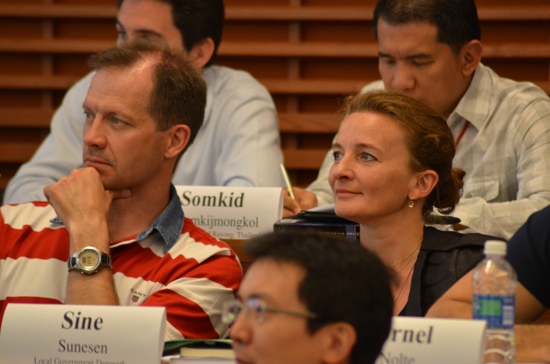Since his graduation from Stanford Graduate School of Business (GSB) in 1982, Dave Weinstein has started five companies in Silicon Valley. He is known for his executive-level marketing and business development experience as well as early-stage sales expertise.
When the GSB’s Dean Garth Saloner invited Weinstein to head both Marketing and Communication as well as Executive Education as the associate dean, Weinstein leveraged the chance to use his background in a meaningful way. He began to build out opportunities in executive education.
Although Stanford does not have a traditional Executive MBA, it offers a rich assortment of executive education programs. As a result, the school has the opportunity to provide a unique experience because executive education is not a fixed program.
According to Weinstein, there are a number of things that make executive education at Stanford different from that at other schools. As a member of UNICON, a global consortium of about 150 business-school-based executive education organizations, he’s gotten a good read on the various programs that exist.
Balancing Financial Return and Meaningful Offerings
“For most organizations, executive education is critical, and its foremost calling is financial,” Weinstein says. “Decisions are made from the seat of economic and financial returns.” But Stanford tries to create a balance between the importance of financial return and the impact that faculty can have on its programs’ participants. The GSB is in a great position to be selective about the opportunities it takes on. At the same time, no one on the faculty has to participate in executive education programs. “Faculty have to find it inviting and rewarding,” Weinstein says.
Executive education is difficult relative to teaching. Students tend to be global and very senior (a profile that hasn’t changed). The seasoned businesspeople who enter the programs tend to set the bar higher in terms of their expectations, and they can be less patient if the results aren’t satisfying.
Unlike at many schools, in executive education, Stanford uses only tenured and tenure-line faculty, not adjuncts and rarely junior-line faculty members. “What results is a much more dynamic exchange in the classroom based on the research that faculty members are involved with,” Weinstein says. “It can be much more dynamic and fluid. Faculty members are fully adept at addressing participants’ issues versus getting through a certain curriculum.”
The GSB is unique in that, although not small, it is a boutique provider. They are not aspiring to grow at a breakneck pace. The faculty is smaller than at many schools, and they have a lot of demands placed on them. Stanford wants to ensure they can meet those demands. “We want our faculty to engage in a broad range of things; we have to be careful how we use them—and use them to their highest calling,” Weinstein says.
None of this comes cheap. The price range for Stanford’s open enrollment costs ranges from a low of $10,500 for Finance and Accounting for the Non-Financial Executives, a five-day course, to a high of $62,500 for the six-week-long Stanford Executive Program, the course that is effectively a mini-MBA.
Open Enrollment Versus Custom Programs
In open enrollment, schools develop a program, create a concept, and then try to sell it. In custom programs, they develop a project in conjunction with an organization. In general, schools with executive education programs are more oriented to customization since, with the former, there is greater risk given the up-front uncertainty about whether or not people will pay to enroll.
At Stanford, they are more open. “Part of our mission is to provide a platform for our faculty,” Weinstein says. “Open enrollment programs become their canvas.” Weinstein recognizes that the school has an elite brand that they can do a lot with. Right now, they create one to two open enrollment programs a year, and they want to pick up that pace.







Questions about this article? Email us or leave a comment below.